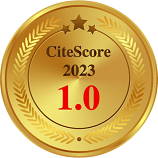Demand-driven digital innovation for cultural heritage tourism development: A Kano model approach
Vol 9, Issue 1, 2025
VIEWS - 53 (Abstract)
Abstract
Cultural heritage tourism requires effective digital solutions to meet evolving tourist needs and balance site preservation with sustainable development. Existing research predominantly focuses on technical feasibility and functionality, with limited attention to diverse tourist demands. This study addresses this gap by investigating tourists’ multi-dimensional needs for cultural heritage tourism applications using the Kano model. Through a case study of Sancai Town, a renowned cultural heritage site in China, 22 demand items were initially identified through semi-structured interviews. A questionnaire survey of 422 tourists was then conducted to categorize these demand items into must-be, one-dimensional, attractive, and indifferent needs. The results indicate that must-be needs, such as navigation and attraction information, form the foundation of tourist expectations. One-dimensional needs, including multimedia presentations and experience sharing, directly influence satisfaction. Attractive needs, such as immersive experiences and personalized services, enhance emotional engagement. Based on this classification, differentiation design strategies are proposed to guide the development of tourism applications that effectively address these needs and enhance the travel experience. The findings contribute to the theoretical understanding of demand-driven digital innovation in cultural heritage tourism and provide practical insights for innovative tourism development in Sancai Town and similar heritage sites. This research advances a tourist-centric perspective to balance cultural preservation and tourism growth, fostering the sustainable integration of heritage and tourism.
Keywords
Full Text:
PDFReferences
Ammirato, S., Felicetti, A. M., Linzalone, R., & Carlucci, D. (2022). Digital business models in cultural tourism. International Journal of Entrepreneurial Behavior & Research, 28(8), 1940-1961. https://doi.org/10.1108/IJEBR-01-2021-0070
Arnold, D., & Kaminski, J. (2013). Cultural heritage tourism and the digital future. In Contemporary issues in cultural heritage tourism (pp. 261-282). Routledge.
Bender, A., Guerreiro, M., Agapito, D., Dias Sequeira, B., & Mendes, J. (2024). Sensory experiences in heritage contexts: A qualitative approach. European Journal of Tourism Research, 36, 3604. https://doi.org/10.54055/ejtr.v36i.3060
Cai, Z., Fang, C., Zhang, Q., & Chen, F. (2021). Joint development of cultural heritage protection and tourism: the case of Mount Lushan cultural landscape heritage site. Heritage Science, 9(1), 86. https://doi.org/10.1186/s40494-021-00558-5
Cao, Z., Mustafa, M., & Mohd Isa, M. H. (2024). The role of artistic quality in a heritage architectural style in modulating tourist interest and aesthetic pleasure: a case study of Hui-style architecture in the Hongcun Scenic Area, China. Journal of Heritage Tourism, 1-23.
Cao, Z., Mustafa, M., Mohd Isa, M. H., & Mao, Y. (2024). Collision of tradition and visual perception: aesthetic evaluation and conservation intent in adapting traditional Chinese gates within architectural heritage. Journal of Asian Architecture and Building Engineering, 1-18.
Casillo, M., De Santo, M., Lombardi, M., Mosca, R., Santaniello, D., & Valentino, C. (2021, August). Recommender systems and digital storytelling to enhance tourism experience in cultural heritage sites. In 2021 IEEE international conference on smart computing (SMARTCOMP) (pp. 323-328). IEEE. DOI: 10.1109/SMARTCOMP52413.2021.00067
Chen, M. Y., Chou, Y. T., & Huang, C. H. (2023). A Study on the Application of Narrative Transportation in Storytelling Tourism Marketing Communication in Taiwan. Journal of Namibian Studies: History Politics Culture, 33, 4397-4406. https ://doi.org/10.59670/jns.v33i.1150
Chiu, C. C., Wei, W. J., Lee, L. C., & Lu, J. C. (2021). Augmented reality system for tourism using image-based recognition. Microsystem Technologies, 27(4), 1811-1826. https://doi.org/10.1007/s00542-019-04600-2
Choedon, T., & Lee, Y. C. (2018). Classification and evaluation of service requirements in mobile tourism application using Kano model and AHP. The Journal of Information Systems, 27(1), 43-65. https://doi.org/10.5859/KAIS.2018.27.1.43
Garrod, B., & Fyall, A. (2000). Managing heritage tourism. Annals of tourism research, 27(3), 682-708. https://doi.org/10.1016/S0160-7383(99)00094-8
Ginzarly, M., & Srour, F. J. (2022). Cultural heritage through the lens of COVID-19. Poetics, 92, 101622. https://doi.org/10.1016/j.poetic.2021.101622
Gregory, A. M., & Parsa, H. G. (2013). Kano's model: an integrative review of theory and applications to the field of hospitality and tourism. Journal of Hospitality Marketing & Management, 22(1), 25-46.
Guest, G., Bunce, A., & Johnson, L. (2006). How many interviews are enough? An experiment with data saturation and variability. Field methods, 18(1), 59-82. https://doi.org/10.1177/1525822X05279903
Hausmann, A., & Schuhbauer, S. (2021). The role of information and communication technologies in cultural tourists’ journeys: the case of a World Heritage Site. Journal of Heritage Tourism, 16(6), 669-683. https://doi.org/10.1080/1743873X.2020.1819300
Jewell, B., & Crotts, J. C. (2002). Adding psychological value to heritage tourism experiences. Journal of Travel & Tourism Marketing, 11(4), 13-28. https://doi.org/10.1300/J073v11n04_02
Jia, S., Chi, O. H., Martinez, S. D., & Lu, L. (2023). When “Old” Meets “New”: Unlocking the Future of Innovative Technology Implementation in Heritage Tourism. Journal of Hospitality & Tourism Research, 10963480231205767. https://doi.org/10.1177/10963480231205767
KANO, N., SERAKU, N., TAKAHASHI, F., & TSUJI, S.. (1984). ATTRACTIVE QUALITY AND MUST-BE QUALITY. JOURNAL OF THE JAPANESE SOCIETY FOR QUALITY CONTROL, 14(2), 0-0. SID. https://sid.ir/paper/600594/en
Katsoni, V., & Spyriadis, T. (2020). Cultural and tourism innovation in the digital era. Springer International Publishing.
Krejcie, R. V. (1970). Determining sample size for research activities. Educational and psychological measurement. New York.
Lee, L. S., Shaharuddin, S. S., Ng, G. W., & Wan-Busrah, S. F. (2017). Co-creation tourism experience in perceived usability of interactive multimedia features on mobile travel application. Journal of Telecommunication, Electronic and Computer Engineering (JTEC), 9(2-9), 155-161.
Li, J., & Kim, K. (2023). Kano-QFD-based analysis of the influence of user experience on the design of handicraft intangible cultural heritage apps. Heritage Science, 11(1), 59. https://doi.org/10.1186/s40494-023-00903-w
Lian, Y., & Xie, J. (2024). The Evolution of Digital Cultural Heritage Research: Identifying Key Trends, Hotspots, and Challenges through Bibliometric Analysis. Sustainability, 16(16), 7125. https://doi.org/10.3390/su16167125
LIU, S., & SHU, H. (2020). Sustainable cultural tourism and heritage conservation in China: Case studies of the ancient waterfront towns in the south of the Yangtze River. WIT Transactions on Ecology and the Environment, 241, 15-26. doi: 10.2495/SDP200021
Liu, Y. (2020). Evaluating visitor experience of digital interpretation and presentation technologies at cultural heritage sites: a case study of the old town, Zuoying. Built Heritage, 4(1), 14. https://doi.org/10.1186/s43238-020-00016-4
Lv, M., Wang, L., & Yan, K. (2020). Research on cultural tourism experience design based on augmented reality. In M. Rauterberg (Ed.), Human-Computer Interaction (LNCS 12215, pp. 172-183). Springer, Cham. https://doi.org/10.1007/978-3-030-50267-6_14
Ma, X., Sun, J., Zhang, G., Ma, M., & Gong, J. (2018, October). Enhanced expression and interaction of paper tourism maps based on augmented reality for emergency response. In Proceedings of the 2018 2nd International Conference on Big Data and Internet of Things (pp. 105-109). https://doi.org/10.1145/3289430.3289442
Maietti, F. (2023). Heritage Enhancement through Digital Tools for Sustainable Fruition—A Conceptual Framework. Sustainability, 15(15), 11799. https://doi.org/10.3390/su151511799
Marconcini, S. (2018, June). ICT as a tool to foster inclusion: Interactive maps to access cultural heritage sites. In IOP Conference Series: Materials Science and Engineering (Vol. 364, No. 1, p. 012040). IOP Publishing. DOI 10.1088/1757-899X/364/1/012040
Matzler, K., & Hinterhuber, H. H. (1998). How to make product development projects more successful by integrating Kano’s model of customer satisfaction into quality function deployment. Technovation, 18(1), 25-38. https://doi.org/10.1016/S0166-4972(97)00072-2
Meng, L., & Liu, Y. (2021). A meaning-aware cultural tourism intelligent navigation system based on anticipatory calculation. Frontiers in Psychology, 11, 611383. https://doi.org/10.3389/fpsyg.2020.611383
Mkpojiogu, E. O., & Hashim, N. L. (2016). Understanding the relationship between Kano model’s customer satisfaction scores and self-stated requirements importance. SpringerPlus, 5, 1-22. https://doi.org/10.1186/s40064-016-1860-y
Nocca, F. (2017). The role of cultural heritage in sustainable development: Multidimensional indicators as decision-making tool. Sustainability, 9(10), 1882. https://doi.org/10.3390/su9101882
Palumbo, F., Dominici, G., & Basile, G. (2014). The culture on the palm of your hand: how to design a user oriented mobile app for museums. In Handbook of research on management of cultural products: e-relationship marketing and accessibility perspectives (pp. 225-244). IGI Global.
Pandey, A., & Sahu, R. (2020). Mapping heritage tourism service quality using the Kano model: a case study of Indian tourism. International Journal of Services and Operations Management, 37(2), 264-283.
Pandey, A., Sahu, R., & Joshi, Y. (2022). Kano model application in the tourism industry: A systematic literature review. Journal of Quality Assurance in Hospitality & Tourism, 23(1), 1-31.
Pawitra, T. A., & Tan, K. C. (2003). Tourist satisfaction in Singapore–a perspective from Indonesian tourists. Managing Service Quality: An International Journal, 13(5), 399-411. https://doi.org/10.1108/09604520310495868
Rattray, J., & Jones, M. C. (2007). Essential elements of questionnaire design and development. Journal of clinical nursing, 16(2), 234-243. https://doi.org/10.1111/j.1365-2702.2006.01573.x
Silberberg, T. (1995). Cultural tourism and business opportunities for museums and heritage sites. Tourism management, 16(5), 361-365. https://doi.org/10.1016/0261-5177(95)00039-Q
Slavec, A., Sajinčič, N., & Starman, V. (2021). Use of smartphone cameras and other applications while traveling to sustain outdoor cultural heritage. Sustainability, 13(13), 7312. https://doi.org/10.3390/su13137312
Solima, L., & Izzo, F. (2018). QR codes in cultural heritage tourism: New communications technologies and future prospects in Naples and Warsaw. Journal of Heritage Tourism, 13(2), 115-127. https://doi.org/10.1080/1743873X.2017.1337776
Song, H. (2018). A critical review of Kano’s wording and its impact on attribute classification: a case study of smartphone in Korea. Total Quality Management & Business Excellence, 29(1-2), 1-28. https://doi.org/10.1080/14783363.2016.1150167
Song, X., Cheong, K. C., Wang, Q., & Li, Y. (2020). Developmental sustainability through heritage preservation: two chinese case studies. Sustainability, 12(9), 3705. https://doi.org/10.3390/su12093705
Todorova-Ekmekci, M. (2021, October). Using innovative technologies, digital media and site tools for presentation and sustainable preservation of cultural heritage. In 2021 5th International Symposium on Multidisciplinary Studies and Innovative Technologies (ISMSIT) (pp. 135-140). IEEE. DOI: 10.1109/ISMSIT52890.2021.9604569
UNESCO. (2021). Culture|2030 indicators. UNESCO Publishing. https://unesdoc.unesco.org/ark:/48223/pf0000379731
Weng, L., He, B. J., Liu, L., Li, C., & Zhang, X. (2019). Sustainability assessment of cultural heritage tourism: Case study of pingyao ancient city in China. Sustainability, 11(5), 1392. https://doi.org/10.3390/su11051392
Xu, J., Shi, P. H., & Chen, X. (2024). Exploring digital innovation in smart tourism destinations: insights from 31 premier tourist cities in digital China. Tourism Review. https://doi.org/10.1108/TR-07-2023-0468
Yeh, H. R., & Lin, L. Z. (2017). Exploring tourists’ nostalgic experiences during culture festivals: the case of the Sung Chiang Battle Array. Current Issues in Tourism, 20(4), 391-424. https://doi.org/10.1080/13683500.2014.983055
Zhao, Y., & Agyeiwaah, E. (2023). Exploring value-based motivations for culture and heritage tourism using the means-end chain and laddering approach. Journal of Heritage Tourism, 18(5), 594-616. https://doi.org/10.1080/1743873X.2023.2215933
Zhu, B. W., Huang, Z., & Xiong, L. (2020). Application of the Kano model and DEMATEL technique to explore sustainable promotion strategie for Thai-Chinese temples as tourist attractions. Religions, 11(4), 199.
Żywiołek, J., Matulewski, M., & Santos, G. (2023). The Kano Model as A Tool for Assessing the Quality of Hunting Tourism-A Case from Poland. International Journal for Quality Research, 17(4).
DOI: https://doi.org/10.24294/jipd10799
Refbacks
- There are currently no refbacks.
Copyright (c) 2025 Jing Wang, Jasni Dolah, Zihao Cao
License URL: https://creativecommons.org/licenses/by/4.0/

This site is licensed under a Creative Commons Attribution 4.0 International License.








